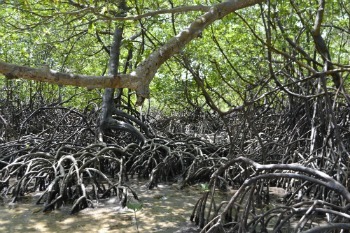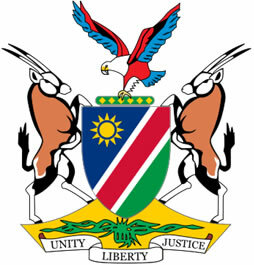O Mangrove is a type of vegetation typical of marshy regions called mangrove.
It is a coastal ecosystem and too humid present in the tropical and subtropical zones.
It plays an important role in the preservation of various plant and animal species, in addition to helping with wear (erosion). This is because it fixes the soil in the areas where it occurs, thus preventing the siltation of the beaches.
Thus, mangroves, considered to be environments rich in biodiversity, arises from the contact of the environment terrestrial and maritime, that is, of rivers and seas.
In Brazil, this ecosystem is present throughout the coastal coast (from north and south), being the country with the longest mangrove strip on the planet. There are approximately 20 thousand km2 of extension.
In general, in other parts of the American continent we find this type of ecosystem, being present also in the African, Asian and Oceania continents.

Features
Mangroves are nutrient-rich environments, resulting from the abundance of decaying organic matter, and have vegetation called “mangroves”. In addition, they have characteristic fauna, given the tidal conditions that characterize these ecosystems.
They are a source of food for several species and even for humans, since many families live off the sale of species extracted from the area.
The muddy environment of the mangroves provides a soil with little oxygenation, with a large amount of brackish water. which generates a characteristic odor. This led several species of plants and shrubs to find a way to adapt, as they have external (aerial) roots that help in the search for oxygen on the surface.
Mangrove Types
According to the conditions of survival in the muddy environments of the mangroves, the three plant species present, called mangroves, are classified into:
- White mangrove (Laguncularia racemosa)
- Red mangrove (Rhizophora mangle)
- Siriuba mangrove (Avicenna schaueriana)
Fauna
The mangrove fauna is formed by numerous species of crustaceans, fish, molluscs, in addition to gathering some species of mammals, birds, reptiles and amphibians.
Examples are crab, oyster, shrimp, snake, crocodile, lizard, turtle, otter, marmoset, manatee, mussel, earthworm, heron, vulture, seagull, hawk, among others.
Environmental problems
The mangrove is considered one of the most threatened ecosystems. The main problems for the ecological imbalance in these places are pollution, exploitation of natural resources, disorderly occupation, tourism and global warming.
To this end, Law No. 4,771 of September 15, 1965 places the mangrove as an Area of Permanent Preservation (APP). Indeed, July 26 is the “International Day for the Defense of Mangroves”.
According to the Ministry of the Environment (2009), “The mangroves cover about 1,225,444 hectares in almost the entire Brazilian coast, from Oiapoque, in Amapá, to the Lagoon in Santa Catarina, constituting areas of high biological productivity, as they host representatives of all links in the food chain. They are morphologically associated with low energy coasts or with estuarine, lagoon, bay and inlet areas that provide the necessary protection for their establishment”.
read Vegetation of Brazil.

